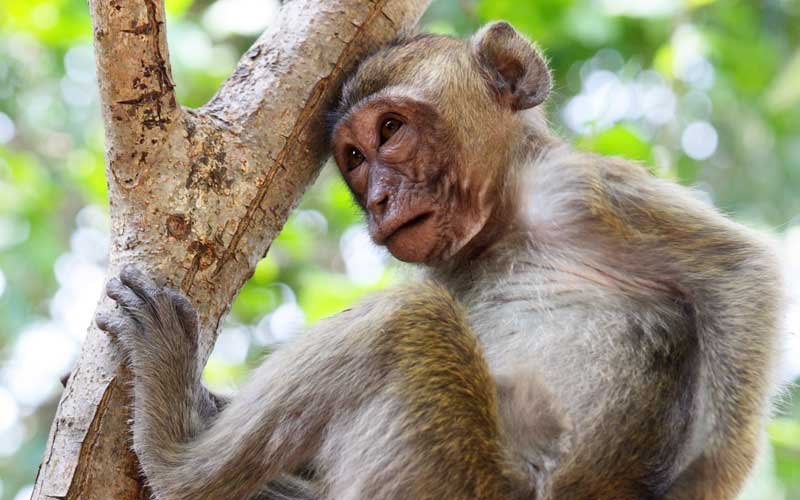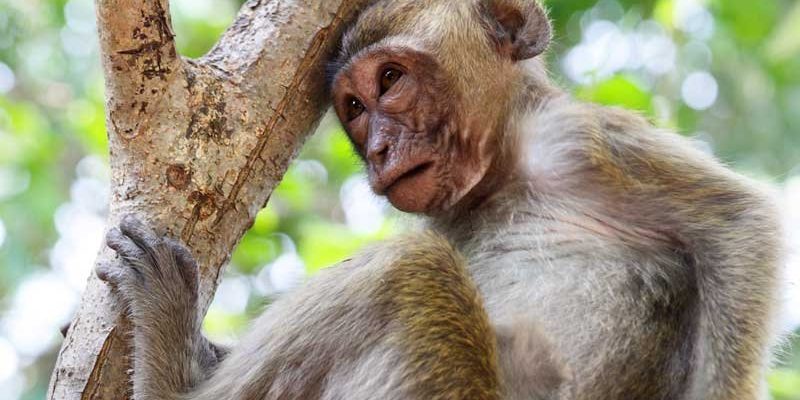
You might picture a monkey lounging in a tropical rainforest, but the truth is, they’re far more adaptable. Depending on the species, monkeys can be found in a variety of locations, from dense jungles to arid savannas. Their habitats significantly impact their behavior, diet, and social structures. Let’s uncover the various places monkeys call home and what makes each habitat special for these intriguing primates.
Types of Monkeys and Their Habitats
Monkeys are broadly classified into two groups: New World monkeys and Old World monkeys. Each group has unique habitats that reflect their evolutionary history.
New World Monkeys
New World monkeys live primarily in Central and South America. These monkeys are known for their prehensile tails, which act like an extra hand for swinging through trees. Species like the howler monkey, capuchin, and squirrel monkey inhabit tropical rainforests, where they enjoy a warm climate and plenty of foliage.
These rainforests, with their towering trees and dense canopy, offer a rich source of food and shelter. Monkeys in this region often feast on fruits, leaves, and insects. Interestingly, their social structures are typically matriarchal, meaning females often lead the groups. This provides a fascinating dynamic, where nurturing and protection are shared among the community.
Old World Monkeys
Old World monkeys are found in Africa and Asia. This group includes familiar species like the baboons, ** macaques, and colobus monkeys**. Their habitats can range from savannas and woodlands to mountainous regions. Unlike their New World cousins, Old World monkeys have non-prehensile tails and often display a variety of adaptations to different environments.
For example, baboons are known to inhabit more open environments like grasslands, where they can forage for seeds and roots. They have a varied diet that helps them thrive in tougher climates. Interestingly, these monkeys often exhibit complex social behaviors and hierarchies, demonstrating their adaptability.
Specific Habitats of Monkeys
Let’s dive deeper into the actual environments where different monkey species reside.
Tropical Rainforests
Tropical rainforests are the most biodiverse ecosystems on the planet, and they’re also a monkey hotspot. The Amazon rainforest is home to numerous species of New World monkeys. Here, the thick canopy provides shelter from rain and predators while offering abundant food sources.
The dense foliage and multi-layered structure of the forest allow monkeys to navigate through different heights safely. You might come across playful little spider monkeys swinging gracefully from branch to branch. These environments are critical not just for monkeys but for countless other species, making conservation efforts vital to protect these ecosystems.
Mountains and Highlands
Monkeys aren’t just limited to lowland areas. Some species, like the Japanese macaque, thrive in mountainous regions. They are famous for bathing in hot springs during winter to stay warm. These highland monkeys have adapted to colder climates, which is quite a feat considering their tropical cousins.
The high altitudes present unique challenges, from temperature fluctuations to finding food. Yet, these clever animals manage by foraging for roots, fruits, and even insects that are available in their rugged habitats.
Urban Environments
You might be surprised to learn that some monkeys have adapted to urban life. Macaques, particularly, are often seen in cities in countries like India and Thailand. They learn to navigate human habitats in search of food, displaying impressive adaptability and intelligence.
Here’s the thing: urbanization presents both opportunities and threats. While monkeys can find new food sources in garbage or parks, they also face dangers from traffic and human interaction. It raises an interesting question about how wildlife and human societies can coexist—maybe we have more to learn from these resourceful creatures than we think.
Challenges to Monkey Habitats
With the increase in human activity, the habitats of monkeys are under serious threat. Deforestation, urbanization, and climate change are wreaking havoc on their living spaces.
Deforestation
Tropical rainforests are being cut down at alarming rates for agriculture and urban development. This not only destroys the monkeys’ natural habitat but also disrupts the delicate food web that supports many species, including humans.
Conservation efforts are critical to protect these ecosystems. Organizations and governments are working together to establish protected areas, promote sustainable practices, and educate local communities on the importance of biodiversity.
Climate Change
Climate change is another significant threat to monkey habitats. Altered weather patterns can change fruiting seasons and food availability. Species that rely on certain plants may struggle to adapt, leading to population declines.
It’s vital for us to be aware of how our actions impact the environment. Supporting conservation initiatives and sustainable practices can help ensure that future generations can enjoy the diverse world of monkeys.
The Importance of Monkey Habitats
Understanding where monkeys live is crucial not just for their survival but for the health of our planet.
Ecological Role
Monkeys play a significant role in their ecosystems. They are important seed dispersers, helping to maintain forest structure and health. By eating fruits and later excreting the seeds, they help propagate various plant species, which in turn supports other wildlife.
This interconnectedness shows us how every species, no matter how small, has a role to play in maintaining ecological balance. Protecting monkey habitats helps preserve entire ecosystems, benefiting countless species.
Human Connection
Monkeys also contribute to our understanding of evolution and behavior. Studying their social structures and interactions gives us insight into our own species. Watching their daily lives can spark curiosity and inspire conservation efforts.
Ultimately, protecting monkey habitats isn’t just a wildlife issue; it’s about ensuring a healthy planet for all living beings, including us. So, next time you hear about where monkeys live, remember it’s not just about the monkeys—they’re part of a bigger story.
In conclusion, the habitats of monkeys are diverse and crucial for their survival. From tropical rainforests to urban jungles, these creatures find ways to adapt and thrive in sometimes challenging environments. By learning more about where they live and the threats they face, we can all play a part in helping protect their homes. After all, in the grand tapestry of life on Earth, every thread counts.

